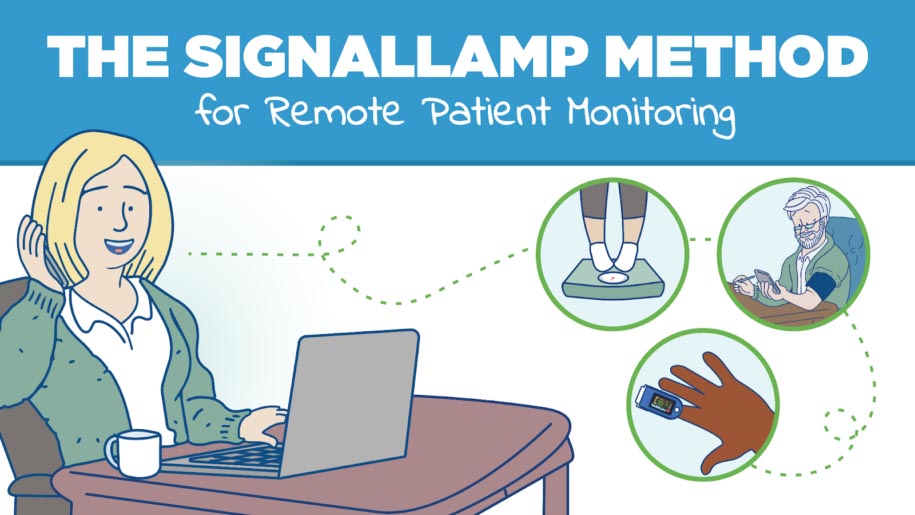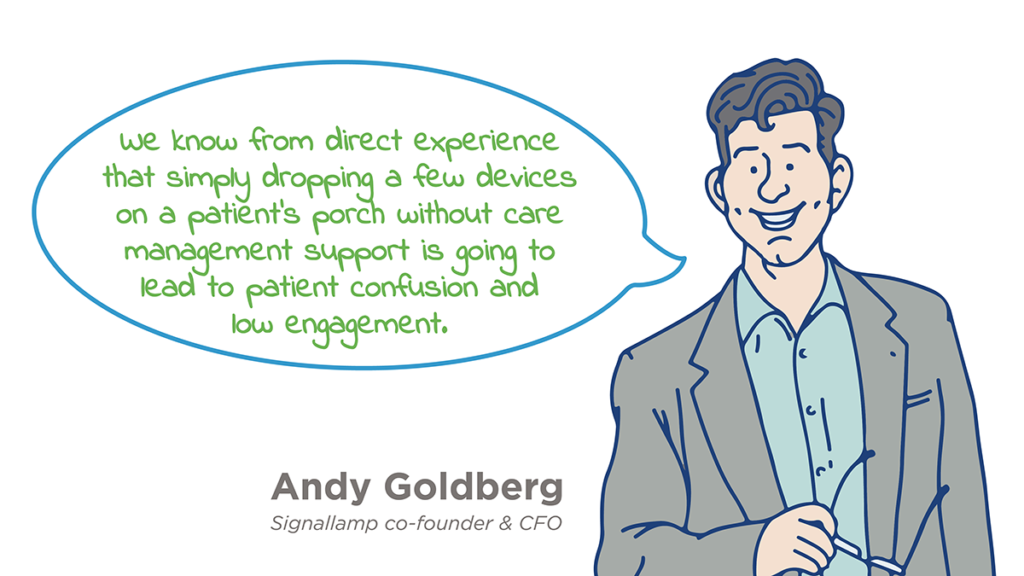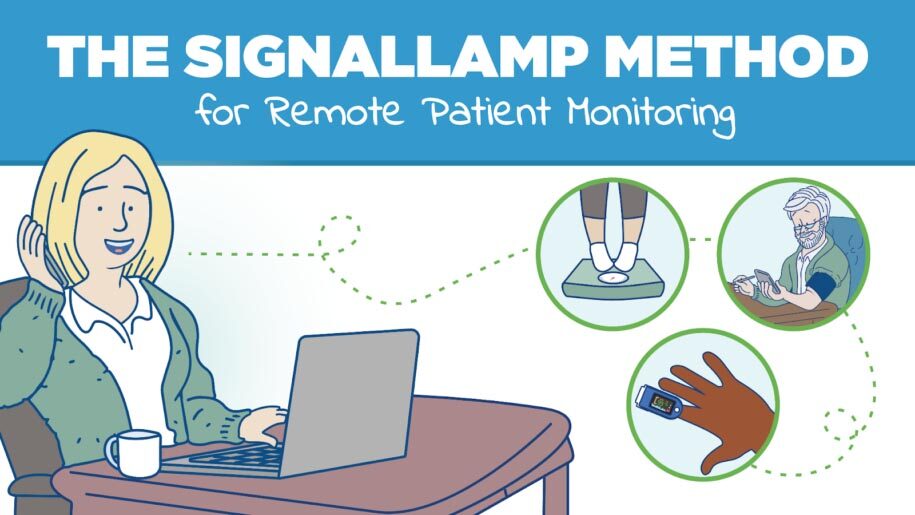
The Signallamp Method for Remote Patient Monitoring or RPM
At Signallamp Health, we have a simple way to describe remote patient monitoring or RPM. It’s chronic care management plus remote monitoring equipment.
That’s because we understand that without also engaging patients in the RPM program with care management resources, patient utilization will be small and short-lived, especially within a Medicare population.
For evidence of this, look no further than the corresponding RPM CPT codes, where Medicare data shows a direct correlation between RPM codes billed for device readings and RPM codes billed for care management. In other words, providers do not collect data from patients whom they are not also engaging with for care management.
Monitoring tools offer tremendous convenience and add rocket fuel to data collection, but they still depend on the relationships that nurse case managers build with their patients over time.
Those nurse case managers gather data and clear away the chaff, then organize meaningful information that empowers improved outcomes. Without a robust CCM program, the likelihood ratchets up that patients won’t fully comply or actually use the monitoring equipment and that data could be incomplete or inaccurate.
That’s why we don’t introduce monitoring until nurse managers have established that rapport with their patients first. That sequence is important, and we’ll go into more detail a little later.
CMS’ revised approach to RPM reimbursements
While the 2022 CPT code reimbursements show the Centers for Disease Control and Prevention’s resounding support for CCM, the support was muted for RPM. Just about all CPT codes saw reimbursement rates sink.
Most dramatically, the monthly reimbursement for data transmission for 2022 is about $55, down more than $7 for that CPT code alone when looking at the national reimbursement rate.
If practices and health systems without the right infrastructure struggled before, many will find it even more challenging to implement a meaningful RPM program now.
In order to achieve scale and maximize the benefits of RPM, health systems and providers either need a massive capital budget with low expectations for a financial return or a partner who already has the infrastructure.
End-to-end RPM without upfront capital investment
Signallamp’s RPM program supports the most common remote monitoring devices and cuts out the requirement for patients to self-report or use extra technology.
We know that complicated technology raises one of the greatest compliance barriers. Eliminating steps and automating wherever possible increases the likelihood of good consistent data transmission.
When on a Signallamp remote patient monitoring program, patients may use devices such as a blood pressure cuff, a pulse oximeter, scale, etc. to gather key physiologic data. This data is then automatically sent to Signallamp. We then monitor the data transmissions in real time and alert their nurse case manager when they are out of the acceptable range set by their provider. The Signallamp nurse then follows up to triage the patient and communicate with the patient’s care team according to predetermined workflows.
For the scale, patients merely have to step on it. For the pulse oximeter, they just stick it on their finger. For the blood pressure cuff, they strap it on and press start.
Health systems doing RPM right now use these metrics, but quite often patients have to self-report using an app or a secure text message.
By automating, data collection becomes a one-step process for the patient.

The CCM-first approach to RPM
The chronic disease requirement for remote patient monitoring reimbursement means that just about anyone who qualifies for RPM also qualifies for chronic care management.
As we mentioned before, Signallamp treats RPM like an add-on to CCM. In order to make the most of the data, we don’t generally recommend introducing monitoring devices until the nurse case manager has an established level of trust with their patient. Relationships help smooth over learning gaps and frustration patients might feel when adapting to new technology.
“We know from direct experience that dropping a few devices on a patient’s porch without care management support is going to lead to patient confusion and low engagement,” said Signallamp co-founder and Chief Financial Officer Andy Goldberg.
Strong relationships does not mean exhausting staff capacity. In fact, Signallamp’s model makes it possible for focused nurse case managers to care for even more patients.
In our experience, a health system that uses office-based nurse case managers can assign one nurse to about 60 patients. That’s because a work day for these office-based nurses includes much more than just case management.
Signallamp’s infrastructure and remote staffing system make it easy for one nurse to build trust and relationships effectively through monthly phone check-ins with up to 300 patients.
Relationships, technology and consistency, make RPM effective
The potential for success with an RPM integration comes not from one facet, but a combination of three.
1. It takes a trusting relationship to ensure compliance.
2. It takes automation to simplify the data transmission process as much as possible, again to improve the odds of compliance.
3. It takes a nurse case manager, working directly in the provider’s EMR, triaging patients who are out of bounds and surfacing to the provider only when provider intervention is required.
“The overall success of the program begins and ends with that nurse/patient relationship,” Goldberg said.
Signallamp Health helps your health system or practice implement a successful RPM program the right way by putting relationships first. Schedule a consultation to find out how.
Get on our calendar

